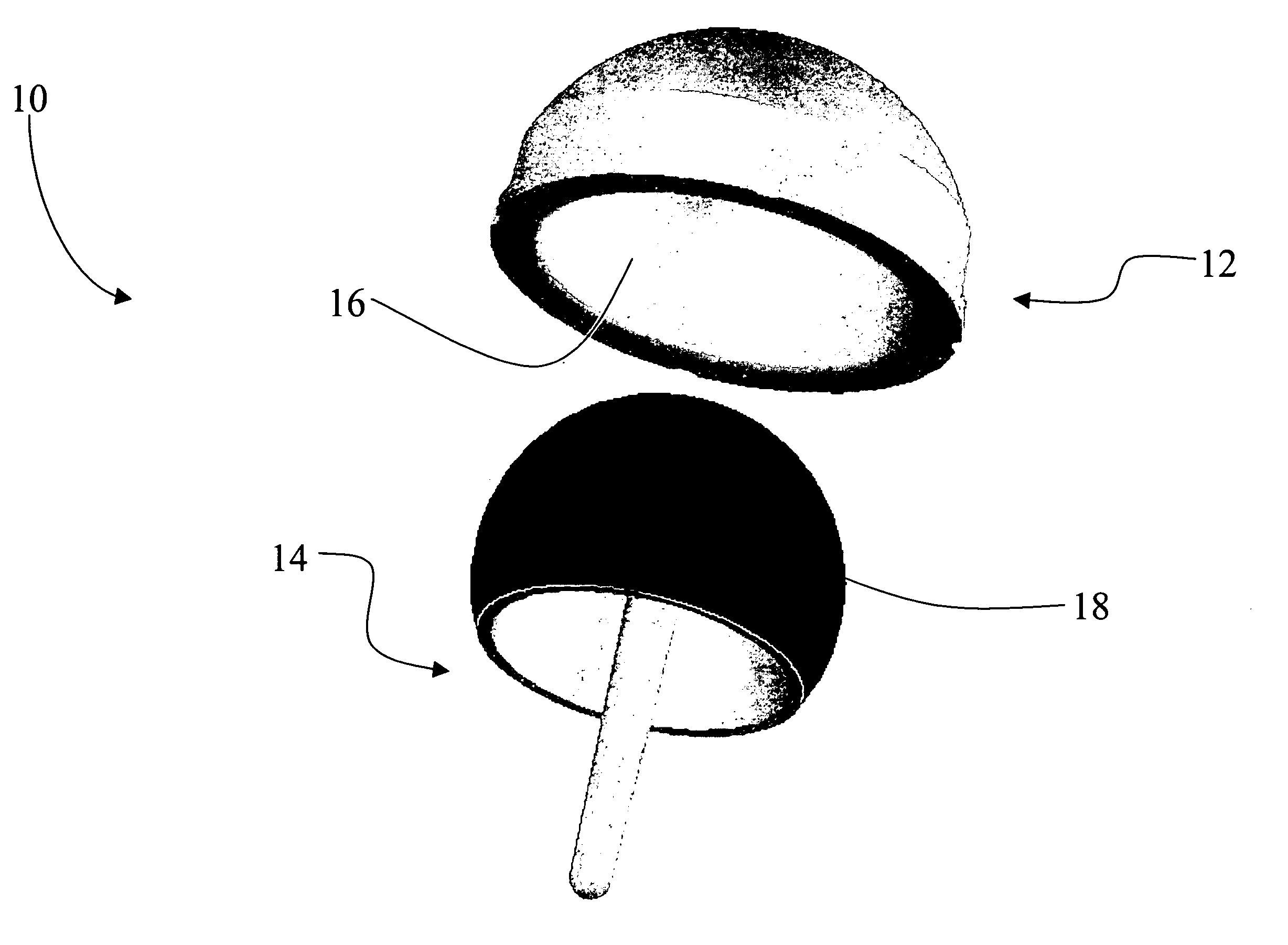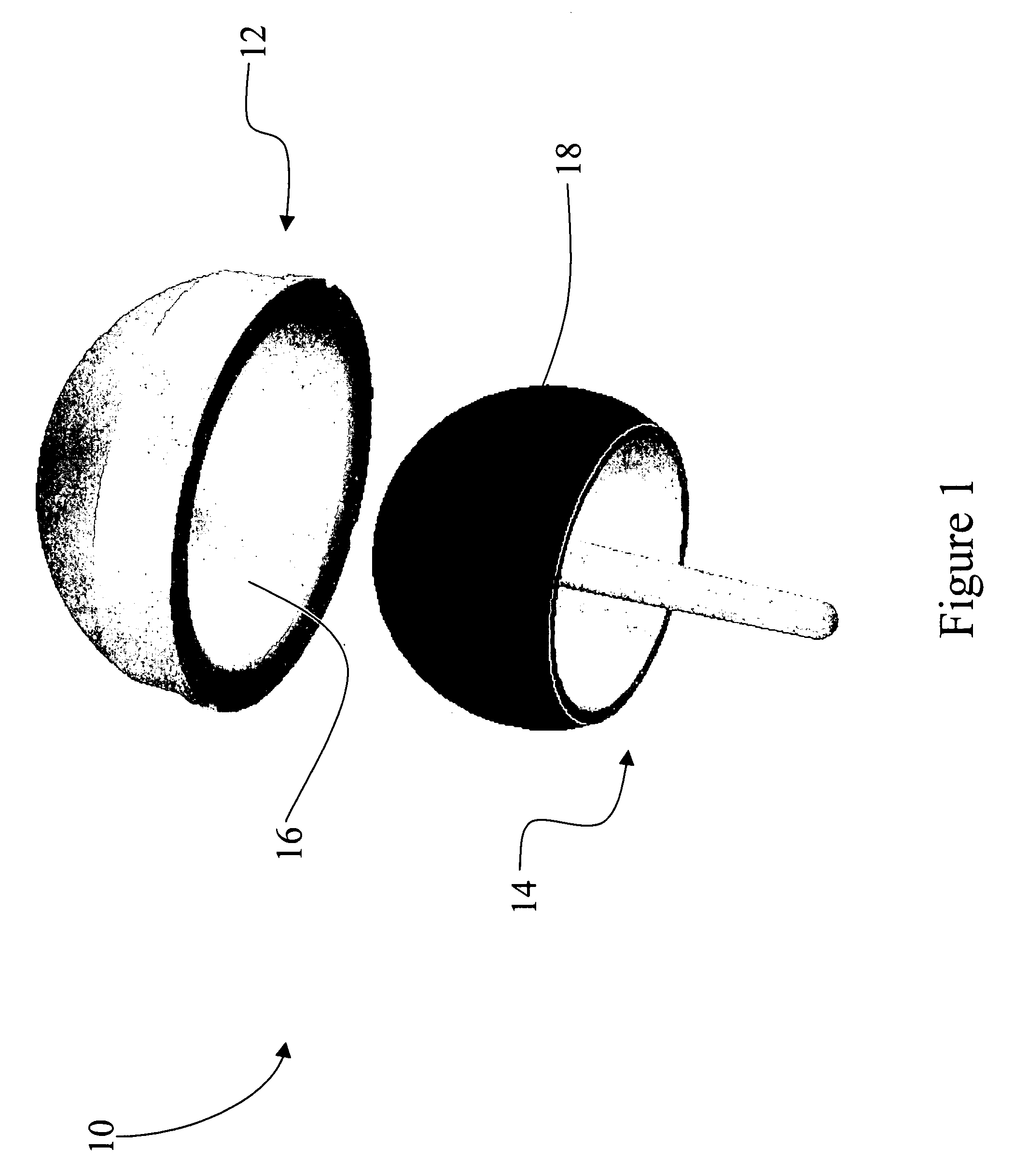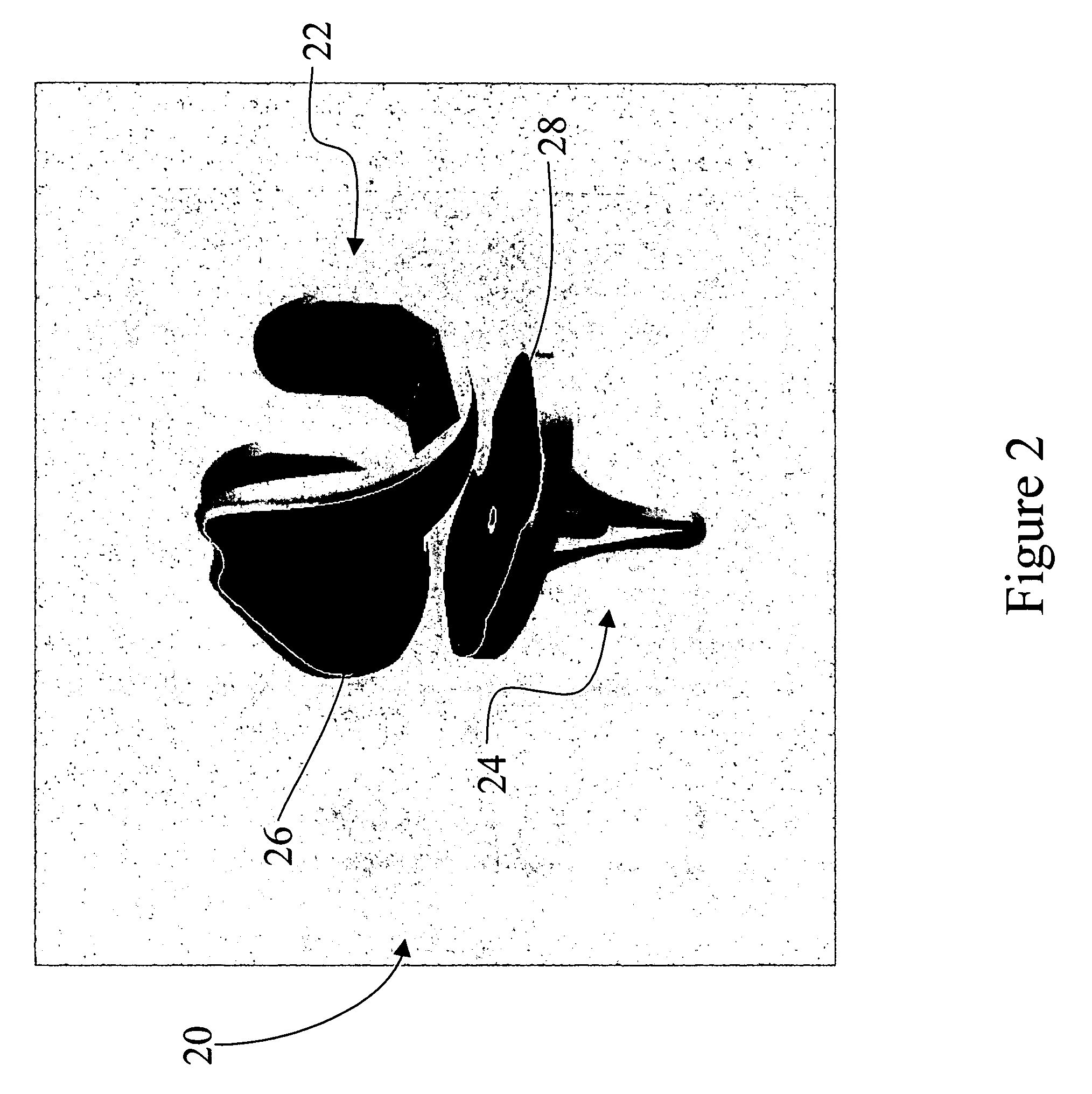Coated medical devices and methods of making and using
a medical device and coating technology, applied in the field of coatings, can solve the problems of small particulate debris that breaks off and contaminates the synovial fluid, and the device can last a few decades, and achieve the effects of reducing the safety of patients, and reducing the risk of infection
- Summary
- Abstract
- Description
- Claims
- Application Information
AI Technical Summary
Problems solved by technology
Method used
Image
Examples
example 1
Thick Chromia Coated Ti6Al4V Femoral Head
[0049] The chromia feedstock composition contained 5 wt % SiO2 and 3 wt % TiO2, with the balance being Cr2O3. The average particle size of the raw powder materials was about 50 nm for Cr2O3 and SiO2, and about 30 nm for TiO2. A slurry containing the feedstock composition was first prepared with a powder to water ratio of 1:2. The feedstock composition was spray dried using a 16-foot industrial spray dryer with an inlet temperature of 446° F., an outlet temperature of 105° C., and a rotary speed of 25,000 RPM. The spray dried feedstock composition was partially sintered by heating at a temperature below 1000° C. in air, followed by heating at about 1000° C. to 1800° C. in hydrogen to agglomerate the nanoparticles into micrometer sized particles for thermal spraying. The feedstock included individual grains of about 20-50 nm agglomerated into about 5-100 micrometer sprayable agglomerates.
[0050] The feedstock was plasma thermal sprayed using a...
example 2
Comparative
[0054] The chromia coated Ti6Al4V femoral head prepared according to Example 1 was compared to a commercial Co—Cr—Mo alloy on UHMWPE knee joint. As shown in Table 1, the improvements over the commercial product are significant.
TABLE 1Comparison of results for knee jointsCommercially Available Knee JointThick FilmMetal-on-Ceramic coatedCoated JointsEstimatedPropertiesUHMWPEmetal-on-polymerCeramic coatingImprovementsGrain size10-30 μm (Metal)1-5 μm (Ceramic)50 nm˜100 times(Ceramic)Hardness320 (Metal)1200 (Ceramic)1250 (Ceramic)100 timeskg / mm25-13 (UHMWPE)5-13 (UHMWPE)1250 (Ceramic)Friction0.02-0.030.02-0.030.025sameCoeff.Wear5 × 10−7 mm3 / NM2-7 × 10−8 mm3 / NM3.8 × 0−910-100 timesFactor0.17 mm / year0.13 mm / yearmm3 / NM˜200 timesLinear Rate0.00067mm / yearLongevity10-12 years15 years (estimated)15-25 years5-10 years(estimated)
When converting the volume wear rate to a linear wear rate, the Cr2O3 coating-on-Cr2O3 coating had a linear wear rate of 0.67 μm / year, which was about 200 ...
PUM
| Property | Measurement | Unit |
|---|---|---|
| Grain size | aaaaa | aaaaa |
| Grain size | aaaaa | aaaaa |
| Thickness | aaaaa | aaaaa |
Abstract
Description
Claims
Application Information
 Login to View More
Login to View More - R&D
- Intellectual Property
- Life Sciences
- Materials
- Tech Scout
- Unparalleled Data Quality
- Higher Quality Content
- 60% Fewer Hallucinations
Browse by: Latest US Patents, China's latest patents, Technical Efficacy Thesaurus, Application Domain, Technology Topic, Popular Technical Reports.
© 2025 PatSnap. All rights reserved.Legal|Privacy policy|Modern Slavery Act Transparency Statement|Sitemap|About US| Contact US: help@patsnap.com



